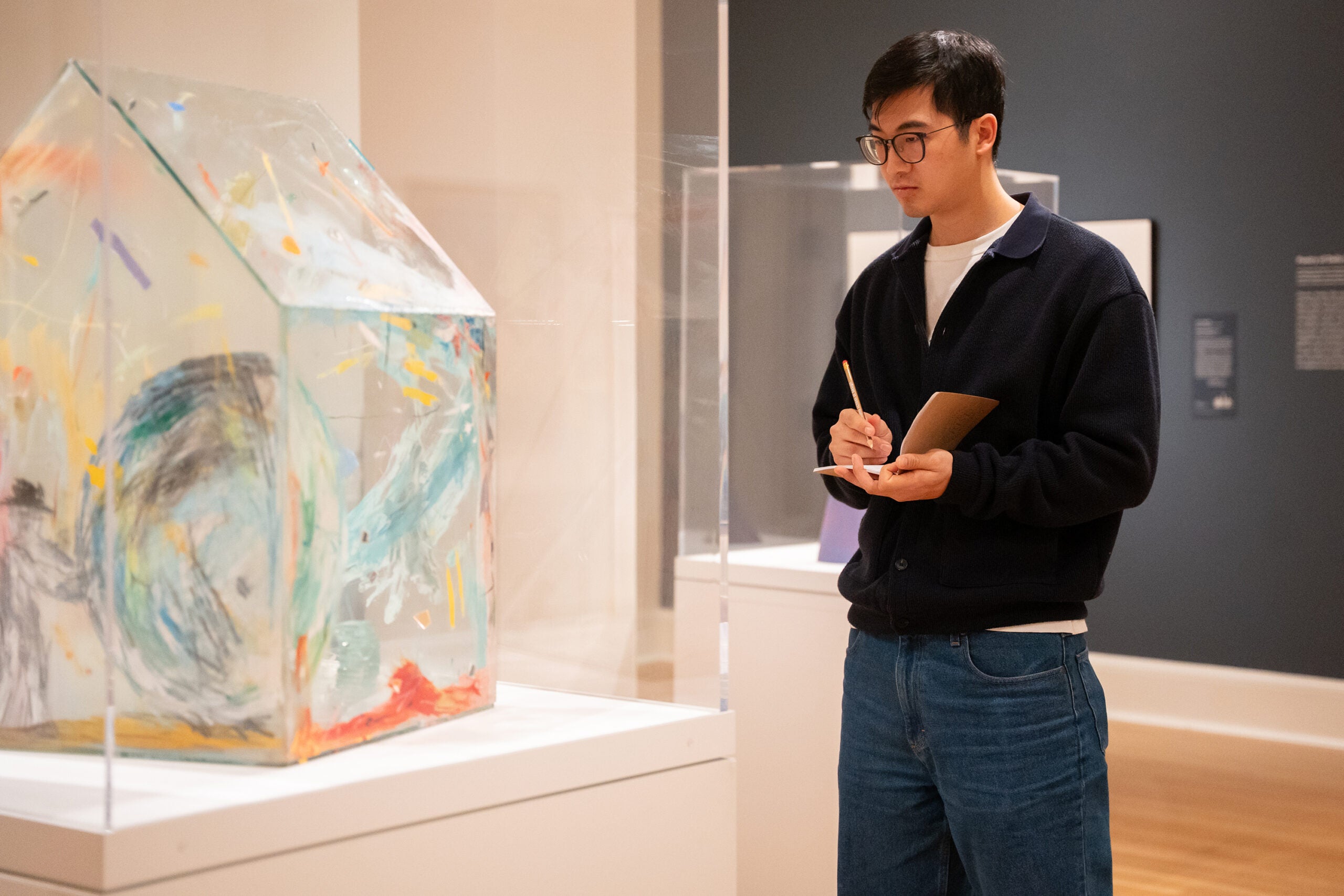May 5, 2025
Three GSO community members recently participated in Vis-a-thon 2025, a unique collaborative program hosted by RISD’s Edna W. Lawrence Nature Lab. Ph.D. candidates Philip Yang and Coralie Rodriguez, along with postdoctoral fellow Connor Love, were each paired with a RISD graduate student to explore how art-based approaches to visualization can advance their research and uncover new opportunities for connecting with diverse, non-science audiences.
Vis-a-thon is led by RISD’s Georgia Rhodes and Stewart Skylar Copeland and is supported by the National Science Foundation through a $8 million award to strengthen Rhode Island’s research enterprise. The funding is part of the Rhode Island Network for Excellence in Science and Technology (RII-NEST), a statewide partnership between URI, the Narragansett Indian Tribe, Brown University, Rhode Island College, RISD, and Roger Williams University, dedicated to advancing science and technology across the state.
The Vis-a-thon program was split into two modules:
- The Visualization Intensive was a full-day workshop focused on building visual literacy. Through breakout sessions, talks from RISD community members, and a visit to the RISD Museum in Providence, GSO students explored how visualization can serve as both an analytical tool and a means of scientific communication. By the end of the day, they had developed and pitched project ideas to carry forward during Vis-a-thon Weekend.
- Vis-a-thon Weekend was a two-day event where participants brought their project proposals to life, working closely with critics and collaborators and being provided technical resources and lab support. The weekend concluded with a debriefing session, offering space for reflection, discussion, and documentation.
Read about the three GSO researchers projects below:
Connor Love:
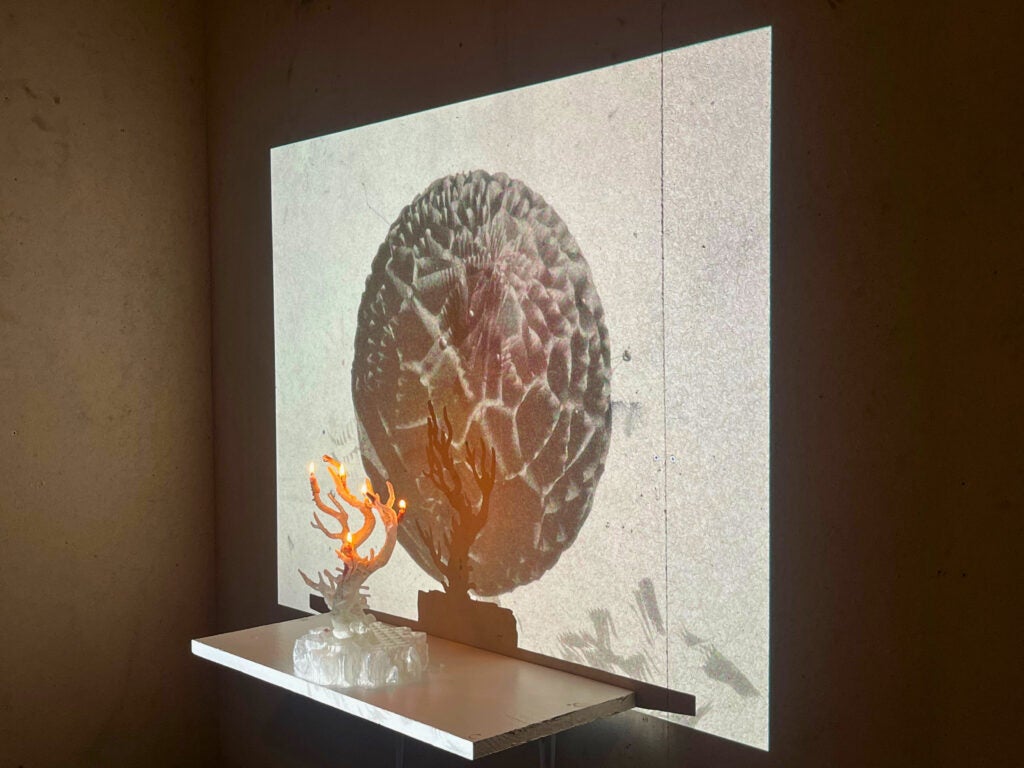
GSO postdoctoral fellow Connor Love collaborated with RISD student Rong Xu to transform long-term water temperature data from the central Red Sea into an immersive sound and animation experience. Using data collected by the KAUST Eco-Oce Lab, the project mapped the dramatic 2024 marine heatwave, which bleached and killed nearly all corals above 20 meters, into an audiovisual piece projected onto a burning sculpture. The work not only visualized climate data but also explored the emotional weight and human impact of ocean warming.
I learned a ton about how different people approach a project like this and how the different approaches of artists, designers and scientists to the same topic can produce vastly different results. I was really inspired by how artists could so quickly transform the scientific concept into a communicative or emotional artistic decision.Connor Love
The projection:
Coralie Rodriguez:
Ph.D. candidate Coralie Rodriguez studies ferromanganese crusts, deep-sea rocks made out of seawater. “My original idea was to tell a story about the rocks and their connection with the ocean as a way to bring the deep-sea up to land—submarine to subaerial,” she shared. Her project explored the contrast between order and disorder through textile art, symbolizing the tension between man-made and raw materials. Coralie collaborated with RISD’s Maite Sosa Methol to experiment with knitting techniques that visually reflect this theme. They grew alum crystals on the textile to emphasize natural irregularity, then painted them with powdered ferromanganese crust, bringing a literal element of Coralie’s research into the piece.
Coming up with a project proposal and talking with the RISD collaborators about the piece helped me to frame my own research in a really useful way. For me, it can be easy to hyper-focus on certain and separate chapters, manuscripts, or projects, but participating in Vis-a-thon helped me to get a larger perspective on my project at a time that was crucial for my own growth as a scientist.Coralie Rodriguez
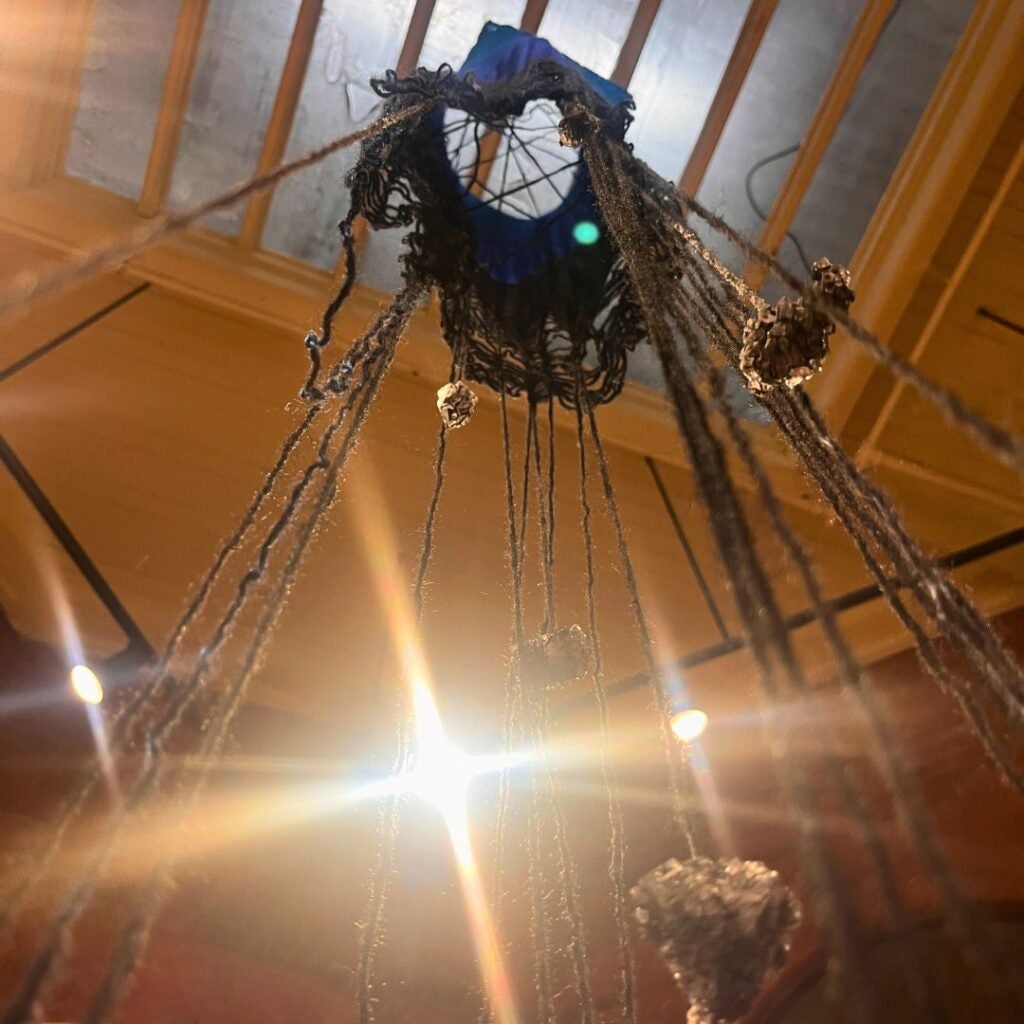
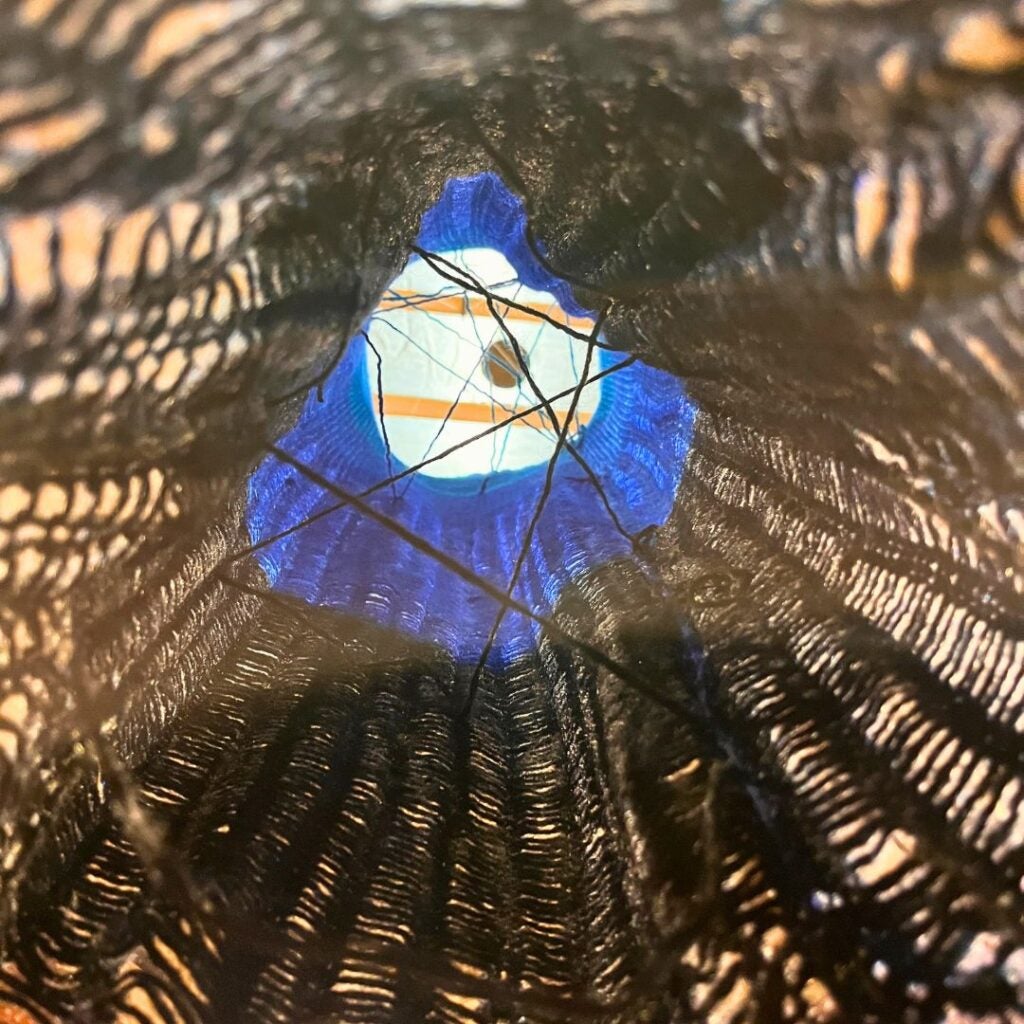
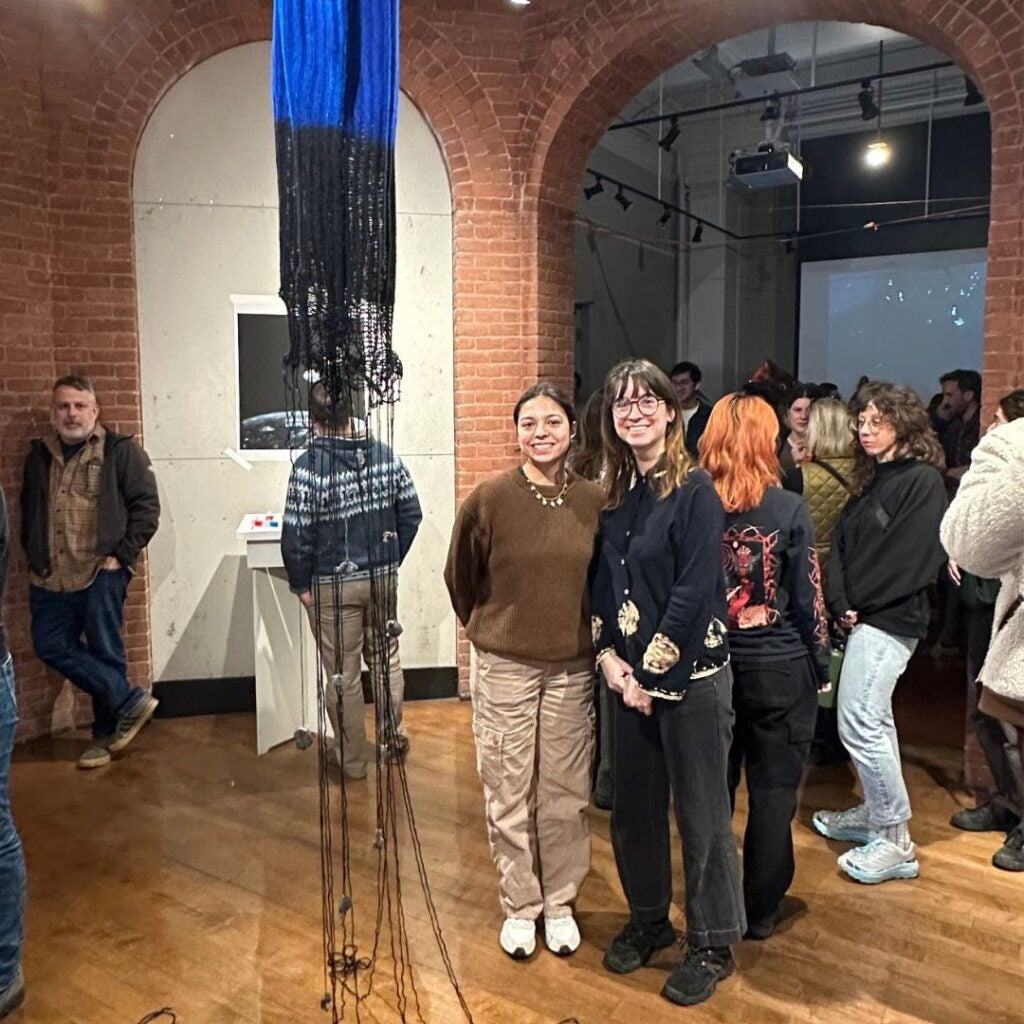
Philip Yang
Ph.D. candidate Philip Yang was interested in bringing to life scientific data gathered from mesophotic reef ecosystems (situated between shallow, brightly lit waters and the deep ocean) in the Gulf of Mexico’s Flower Garden Banks National Marine Sanctuary. Collaborating with RISD’s Pablo Cazares, they worked though how to “blur the lines between a coral’s home and our own experience of home, space, time, and environmental forces,” shared Philip.
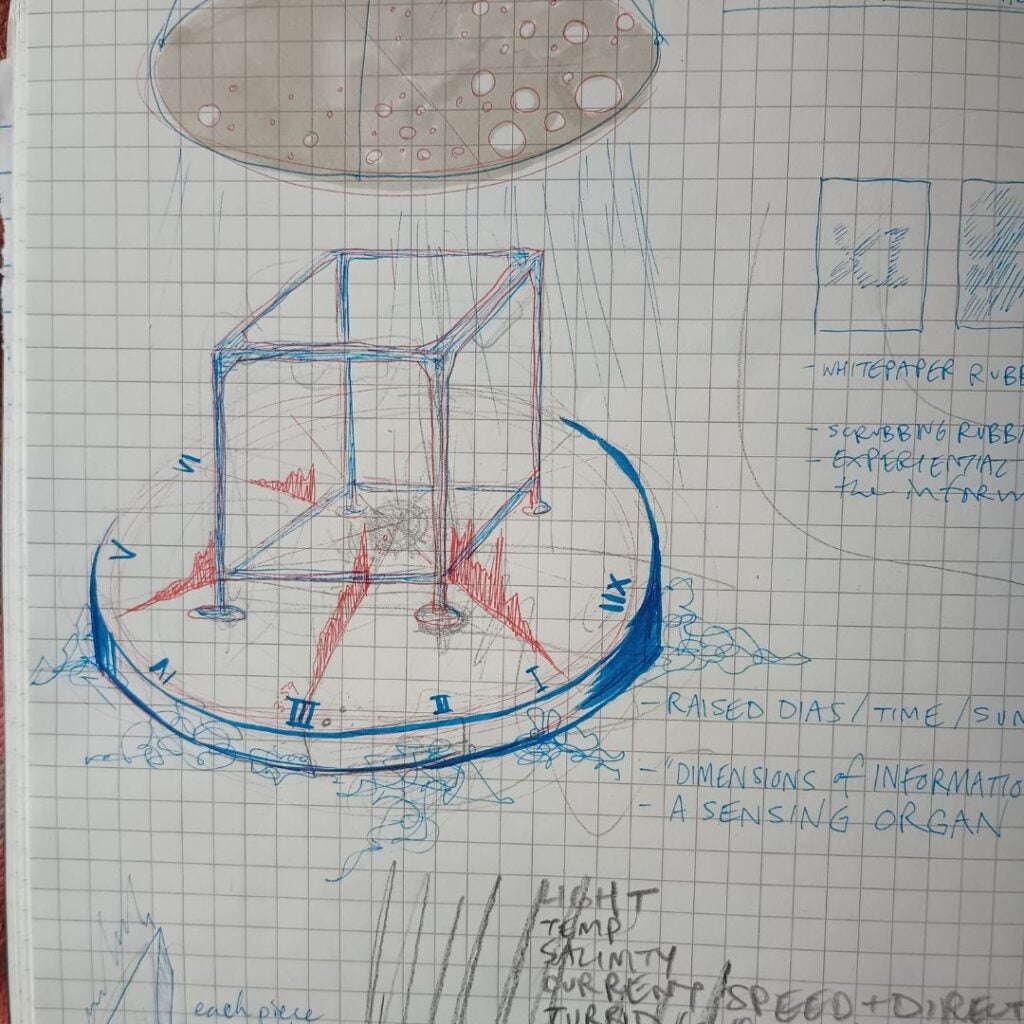
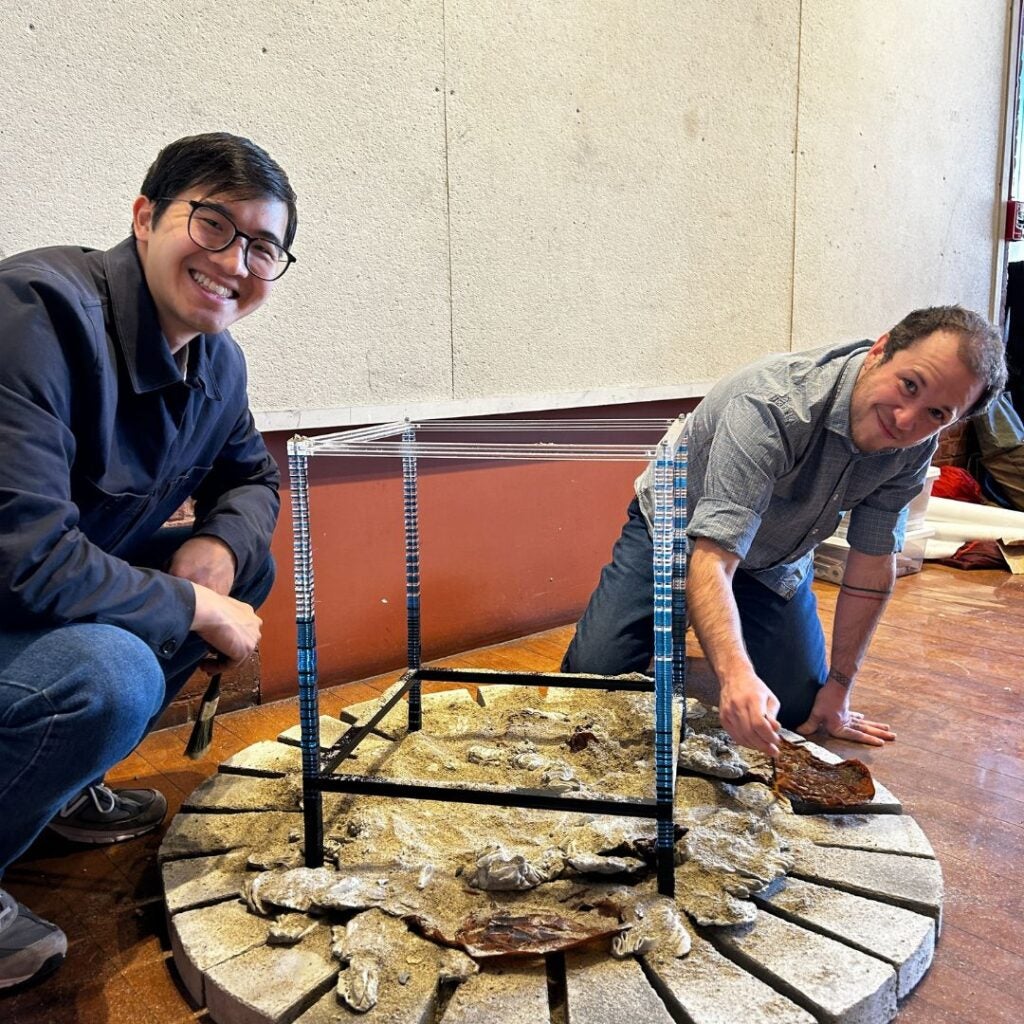
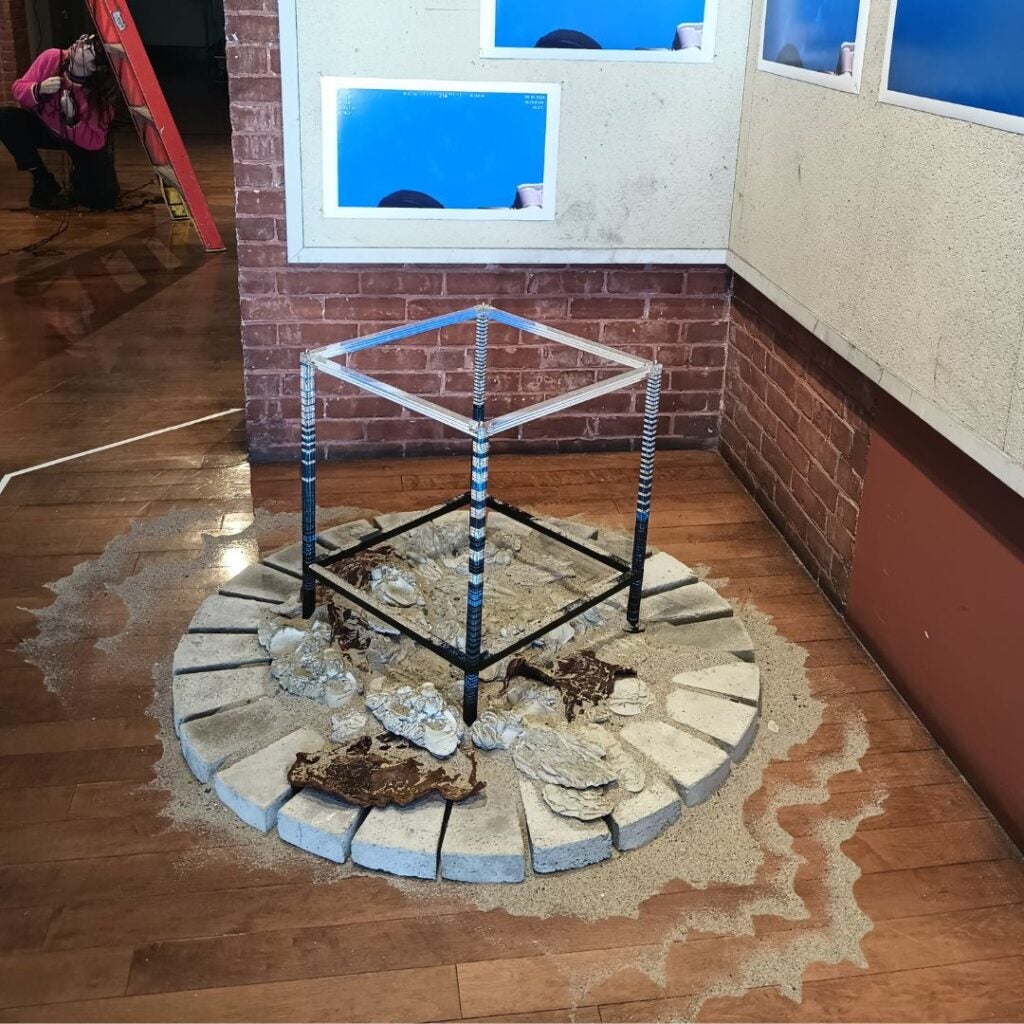
The final work featured a lander-like structure positioned on a concrete base embedded with sand, coral molds, and dried bacterial mats to represent the passage of time. Behind the sculpture, a series of underwater photographs, captured during an August 2024 expedition, depict the “vast blue void” often encountered in deep-sea research, highlighting both the isolation of the environment and the persistence required to study it.
By performing the art process in a more structured way on a time crunch and with a final critique, I learned more about how that process is not so different from the scientific process that I am most familiar with. Science starts with questions, and so does art, and both forms seek to reach some sort of answer.Philip Yang
Rhode Island Network for Excellence in Science and Technology (RII-NEST) is an initiative of Rhode Island NSF EPSCoR. Based at the University of Rhode Island and funded through the National Science Foundation and RI Commerce, RI-EPSCoR has supported statewide partnerships among institutions of higher education, government, industry and communities to develop basic, use-inspired, translational and applied scientific research addressing real-world problems locally and beyond.

